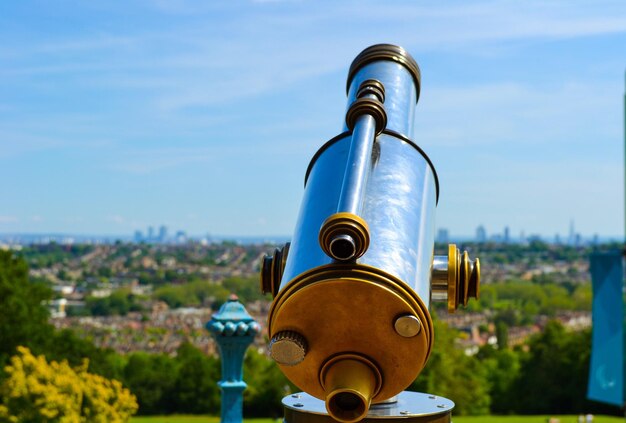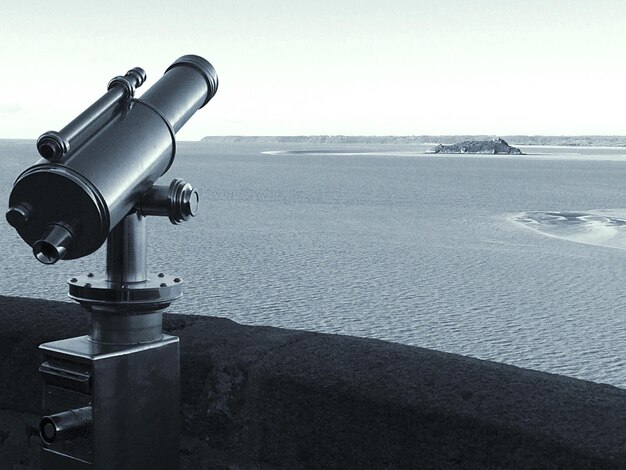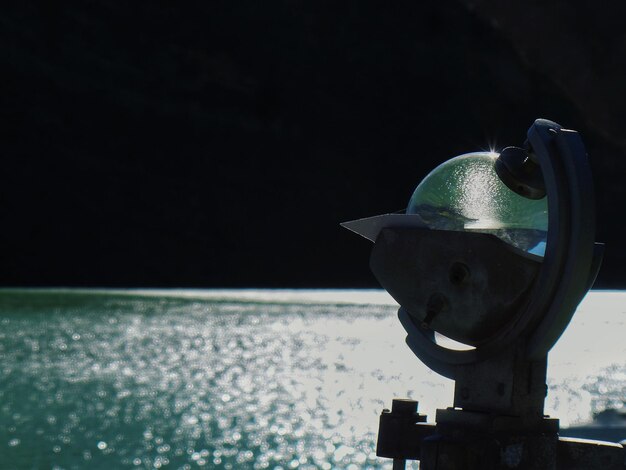Through the Lens of a Telescope: The Fascinating History and Impact on Space Exploration
Space exploration as we know it today would not have been possible without the humble telescope. This innovative device, which magnifies distant objects, has played a pivotal role in shaping our understanding of the universe since its invention. The
early history
of telescopes can be traced back to the Netherlands in the late 16th century when Hans Lippershey, Jacob Metius, and Zacharias Janssen independently claimed to have invented it. However, the first practical telescope was built by Galileo Galilei in 1609, which revolutionized astronomy.
Galileo’s Discoveries
Using his telescope, Galileo made groundbreaking observations that challenged the established beliefs of his time. He discovered the four largest Moon moons – Io, Europa, Ganymede, and Callisto; observed the phases of Venus; and discovered the existence of countless stars that were previously invisible to the naked eye. His findings provided strong evidence in favor of the Copernican heliocentric model of the solar system, which placed the Sun at the center.
Subsequent Developments
The
18th and 19th centuries
saw the development of larger telescopes with better resolving power. Isaac Newton, for instance, made significant improvements to both the reflecting and refracting types of telescopes. In the late 19th century, photography was introduced to astronomy, which enabled astronomers to capture images of celestial bodies. The early 20th century marked the dawn of
radio astronomy
, where radio waves were used to study space.
Modern Telescopes and Space Exploration
Today, telescopes have become essential tools for space exploration. They are used to observe planets in our solar system and galaxies far beyond. The
Hubble Space Telescope
, launched in 1990, is a prime example of their capabilities. It has provided stunning images of the universe and made numerous discoveries, including the existence of black holes at the center of galaxies.
In conclusion, telescopes have played an indispensable role in the history of space exploration. Their development led to significant advancements in our understanding of the universe, paving the way for future discoveries and innovations.

I. Introduction
Telescopes have been instrumental in expanding our horizons and broadening our understanding of the universe since their inception. These remarkable devices help us observe celestial bodies and phenomena that lie beyond our physical reach, offering valuable insights into the mysteries of space. In this presentation, we will delve into the historical context of telescopes and their development, highlighting key milestones that have shaped our perception of the cosmos. We will also examine some major breakthroughs and discoveries that have been facilitated by telescopes throughout history. Furthermore, we will discuss the pivotal role telescopes continue to play in current space exploration programs, as well as future plans that promise to unlock even more secrets of the universe.
Historical Context of Telescopes
The story of telescopes dates back to the late 16th century when Dutch spectacle maker Hans Lippershey is believed to have invented the first rudimentary telescope. However, it was the pioneering work of Galileo Galilei in 1609 that truly revolutionized astronomy with his observations made using an improved telescope. Since then, telescopes have undergone numerous advancements, both in terms of design and technology.
Major Breakthroughs and Discoveries Facilitated by Telescopes
Some of the most notable discoveries in the history of astronomy can be attributed to telescopic observations. For instance, Galileo’s discovery of Jupiter’s four largest moons – Io, Europa, Ganymede, and Callisto – in 1610 challenged the prevailing geocentric model. Similarly, Edmond Halley’s use of telescopes led to the identification of the comet now known as Halley’s Comet. In the 19th and 20th centuries, telescopes enabled astronomers to identify galaxies beyond the Milky Way and uncover the expanding universe theory.
Role of Telescopes in Current Space Exploration Programs and Future Plans
Today, telescopes continue to be essential tools for space exploration. They enable astronomers to study various aspects of the universe such as its composition, structure, and evolution. For example, the Hubble Space Telescope has provided stunning images of distant galaxies, nebulae, and other celestial bodies, providing vital data for scientific research. As we look to the future, telescopes like the James Webb Space Telescope are set to revolutionize our understanding of the universe once again by exploring the infrared and near-infrared regions of the electromagnetic spectrum.
Conclusion
In conclusion, telescopes have played a crucial role in expanding our knowledge of the universe and unlocking some of its most profound secrets. From their humble beginnings to their current status as indispensable tools for space exploration, telescopes continue to push the boundaries of human curiosity and discovery.

Historical Context of Telescopes
Early beginnings: Galileo Galilei and the first telescope (1609)
Galileo Galilei, an Italian physicist and astronomer, is often credited with the invention of the telescope in 1609. His telescope had a magnification power of only 3x, which might seem insignificant by today’s standards. However, this humble instrument revolutionized the way we view the universe. Galileo’s telescope had a convex lens as its objective and a concave lens as its eyepiece, making it a simple refracting telescope. The telescope‘s capabilities were impressive for the time – it could magnify stars, planets, and the moon with remarkable clarity. Galileo made significant discoveries using this early instrument, including the moons of Jupiter (Io, Europa, Ganymede, and Callisto) and the phases of Venus, which provided strong evidence for Copernicus’ heliocentric model of the solar system.
Improvements and advancements in telescope technology throughout history
After Galileo’s groundbreaking work, advancements in telescope technology continued to unfold. In 1671, Sir Isaac Newton introduced the first reflector telescope, which used mirrors instead of lenses for image formation. A year later, James Gregory designed and built a more advanced reflecting telescope that significantly improved resolution and light gathering ability. In 1758, John Dollond achieved the milestone of creating achromatic lenses, which eliminated chromatic aberration in refracting telescopes. The development of large-scale reflecting telescopes, such as those at Lick Observatory and Mount Palomar, allowed for larger apertures, leading to more detailed observations.
Role of telescopes in the 20th century (Hubble Space Telescope, radio telescopes)
In the 20th century, telescopes continued to shape our understanding of the universe. The Hubble Space Telescope, launched in 1990, has had a revolutionary impact on astronomy with its high-resolution images of distant galaxies and stars. Some of the significant discoveries made by Hubble include the expanding universe, dark matter, and dark energy. Another milestone was the development and use of radio telescopes, which enabled astronomers to explore the universe beyond visible light. These telescopes could detect radio waves from celestial bodies, leading to discoveries like pulsars, quasars, and the cosmic microwave background radiation.

I Major Breakthroughs and Discoveries Facilitated by Telescopes
The Solar System
Detailed observations of the solar system using telescopes have led to numerous major discoveries. In the realm of planets, moons, and rings, telescopic studies have unveiled intriguing findings. For instance, the discovery of new moons and ring systems around planets such as Uranus and Neptune expanded our understanding of these celestial bodies. Furthermore, the study of planetary atmospheres, composition, and geological features has yielded exciting discoveries like volcanic activity on Io and methane lakes on Titan.
Stars and Stellar Evolution
Stars have been the focus of extensive telescopic studies, leading to significant breakthroughs in understanding their types, temperatures, and sizes. Discoveries of white dwarfs, neutron stars, and even black holes have revolutionized our understanding of stellar evolution. Observations have also shed light on different stages of stellar evolution, such as the Red giant branch and white dwarf stage.
Galaxies and the Universe as a Whole
Galaxies
Structures, Shapes, and Sizes
Telescopic studies have provided detailed insights into galaxy structures, shapes, and sizes. Discoveries of various types, including spiral and elliptical galaxies, as well as active galactic nuclei, have expanded our knowledge of these vast systems.
Understanding the Universe’s Expansion
Observations of distant galaxies using telescopes led to the groundbreaking discovery that the universe is expanding. The redshift of light from these galaxies indicated that they were moving away from us, suggesting that the universe itself was expanding.

The Role of Telescopes in Current Space Exploration Programs and Future Plans
Telescopes have been instrumental in expanding our understanding of the universe since their invention. In the realm of space exploration, they continue to play a pivotal role in revealing new discoveries and shedding light on mysteries that lie beyond our reach. Let’s explore some current telescopes and their future plans.
Hubble Space Telescope’s continued contributions to space exploration
Hubble Space Telescope, launched in 1990, has been a trailblazer in space-based observations. Its contributions are far from over:
Ongoing discoveries from new observations and upgrades
a. Discoveries of exoplanets, galaxy mergers, and more: Hubble’s latest observations have led to the discovery of over 1,200 exoplanets, and it continues to provide detailed images of distant galaxies and their mergers.
Future plans for Hubble’s successor, the James Webb Space Telescope
b. The James Webb Space Telescope (JWST): Hubble’s successor, JWST, is set to launch soon and will probe deeper into the universe’s past. Some of its anticipated discoveries include:
– Observations of the first galaxies formed after the Big Bang
Other current space telescopes and their roles
Chandra X-ray Observatory: This telescope, launched in 1999, specializes in studying
a. Discoveries of black holes, supernovae remnants
Spitzer Space Telescope: This space telescope, launched in 2003, studies
a. Discoveries of new planets, studying the life cycle of stars
Future space telescope projects and their goals
James Webb Space Telescope (JWST): We’ve already touched upon JWST, but its goals are worth reiterating. It will:
a. Discoveries of distant galaxies, understanding the expansion rate of the universe
Large Synoptic Survey Telescope (LSST): LSST is expected to launch in 2023 and will map the entire visible universe. Some of its anticipated discoveries include:
a. Discoveries of new galaxies, exoplanets, and transient phenomena
Wide Field Infrared Survey Telescope (WFIRST): Launching around 2026, WFIRST will study:
a. Discoveries of distant galaxies, understanding dark energy

Conclusion
Telescopes, the magnificent instruments of space exploration, have played a crucial role in expanding our horizons and broadening our understanding of the universe. By helping us observe celestial bodies and phenomena beyond our reach, they have contributed significantly to our knowledge and fascination with the cosmos.
Recap of Telescopes’ Role in Space Exploration
First and foremost, telescopes have enabled us to observe the universe in ways we couldn’t otherwise. They allow us to see stars that are too distant, galaxies that are too far away, and celestial phenomena that unfold over vast time scales. By analyzing the light emitted by these objects, we can learn about their composition, temperature, and motion. Furthermore, telescopes have provided us with a wealth of data on solar system bodies, such as planets, moons, asteroids, and comets.
Observing the Cosmos
Galaxies, the vast collections of stars, gas, and dust that form the building blocks of the universe, have been a major focus of telescopic studies. By observing galaxies at different distances and in various stages of evolution, astronomers have pieced together the link and gained insight into the fundamental laws of physics that govern the universe.
Understanding the Universe’s Secrets
Telescopes have also helped us uncover many secrets of our own solar system. For instance, they have provided evidence for the existence of link orbiting other stars, and even detected signs of water on some of them. Telescopic observations have also revealed fascinating phenomena such as link on other planets and the intricate link.
Excitement for Future Discoveries
The potential for future discoveries made possible by telescopes is truly exhilarating. Currently, there are several ongoing missions that continue to yield exciting results. For example, the link has provided us with breathtaking images of distant galaxies and nebulae, while the link has helped us study the high-energy phenomena that occur in the universe, such as black holes and supernovae. The link, which operates in the infrared spectrum, has opened up a new window into the universe and allowed us to observe previously hidden details.
Ongoing Missions
There are also upcoming projects that promise to push the boundaries of our understanding even further. For instance, the link is set to launch soon and will provide unprecedented detail in the infrared spectrum, allowing us to study the universe’s earliest galaxies and probe the mysteries of black holes. The link (LSST) will conduct a survey of the entire visible sky every few nights, enabling us to discover and study tens of thousands of asteroids and comets.
Upcoming Projects
Another highly anticipated project is the link (WFIRST), which will study exoplanets, dark energy, and the formation of galaxies. These future discoveries will undoubtedly expand our knowledge of the universe and fuel our curiosity for decades to come.




